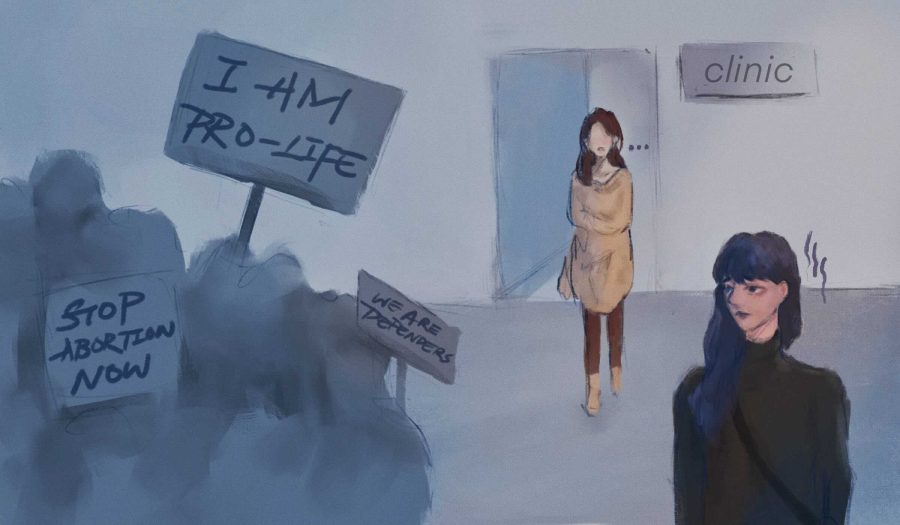When individuals walk up to Planned Parenthood, they must make a decision that is rarely easy to come to. They’re approached by activists who are dedicated to preventing them from entering the building, begging them to reconsider what might be best for them regarding their pregnancy; that’s a decent portion of what anti-abortionists delegate their efforts to. Anti-abortionists base their rhetoric on the limiting and prevention of legal availbailty to abortions. More specifically, those who oppose abortions to the capcity in which they band together with the purpose of advocating against it assert that their goal is to make abortions “illegal and unthinkable.” While anti-abortionists actively stand in favor of the increasingly difficult regulations placed on abortions, which have proven to make accessibility to abortions harder in some states, there is another avenue the anti-abortionists can take that truly could make the likelihood of abortion less considerable within America: promoting the increase of resources that would lower the rate of unintended pregnancies rather than waiting to commence their advocacy until after individuals are pregnant.
The rate of unintended pregnancies is not staggeringly high in America, but it is higher than other high-resource countries. Nearly half of abortions within the United States are induced due to an uninteded pregnancy. There are two main areas in which anti-abortionists could redirect their activism and efforts: the improvement and implementation of comprehensive sexual education and increased accessibility to contraceptives.
As a disclaimer, there is no way to ensure the definitive end of unintended pregnancies; however, if prioritized, the decrease of unintended pregnancies could result in less desire for abortion.
First area of advocacy: pushing each state to have improved, comprehensive sexual education courses for high school and college students. Sexual education needs to be reflective of all the nuances that accompany sexual relations: the emotional, physiological, and psychosocial aspects, cultural and economic differences, and student sexual orientation. When in place, these programs allow for students to be aware of the peril of risky sexual behaviors; they have also been linked to lower rates of teen pregnancy.
In California, for example, the teen pregnancy rate was exceptionally high in the 1990s, yet policy changes and increased efforts to improve secondary school’s sexual education courses resulted in a lower pregnancy rate by 2005. While California is known to be a more liberal state, even so, it took years after the reconstruction of the sexual education programs for the state to enforce mandated sex ed. in schools. More conservative states could present a new challenge in terms of changing schools’ sexual education curriculum. Discouragingly enough, only 17 of the 50 states require sexual education be medically accurate and only nine require that instruction is appropriate for the students racial, ethinic, and cultural background.
If anti-abortion activists used their efforts to call for sexual education reform, they would be benefiting many adolescents by enabling them to make safer choices regarding their sexual behaviors. Alteration to policy takes time, and if the anti-abortionists began using their voice to call for change, it would amplify the importance of these modifications and possibly encourage governors and legislators to amend curriculum.
The second area anti-abortionists should be dedicating time to is in calling for increased accessibility to contraceptives. Anti-abortionists usually exalt “life begins at conception,” leading them to strongly disparage the usage of IUDs; the problem being that IUDs have been believed to be abortifacients. However, there are other contraceptive options that very evidently prevent sperm cells from being able to meet egg cells. Not all anti-abortionists are against contraceptives, in fact, some pro-life clinics will provide them. Yet, there are still a decent amount of anti-abortionists that assert that their religious beliefs do not align with sexual relations that occur outside of wedlock and continue to urge abstinence.
While everyone is entitled to their beliefs, if your call is to prevent abortions to such a degree to which you protest outside of planned parenthoods, the understanding needs to be that pleading abstinence is not going to resonate with everyone. What does have the potential to stop abortions is stopping pregnancy through the use of contraception. Waiting until women are pregnant and trying to talk them out of abortion forces them to completely ignore your pleas. Strangers approaching you as you are about to make a monumental decision and telling you not to do something without ever having an understanding of your life situation can appear less-than convincing.
What anti-abortionists can do to meet people in the middle is to supply contraceptives and explain to individuals that while they are supplying contraceptives, they do not support sexual activity outside of wedlock. Telling people you do not encourage sexual relations, but still providing them contraceptives leaves the decision making to the invidual. You did not explicitly encourage their behaviors, you simply told them your stance and gave them the means to be safe in the chance they need to use it. In reality, anti-abortionists cannot make any decisions for anyone, but if they want to prevent abortions, this is one way they can try to.
There are many ways to attempt to prevent unintended pregnancies. The ones listed above are simply two facets of the equation that would most directly affect the chances of pregnancy. Whether or not someone feels prepared to enter parenthood is highly variable depending on their life situation, and it is more beneficial to prevent pregnancies than try to fight abortion. If anti-abortionists expand their efforts by directly working to decrease unintended pregnancies, they would be meeting their goal.
Art by Angela Liang for the UC San Diego Guardian








Emma • Jan 29, 2021 at 3:33 am
Business needs change over time. The Mobile Device Management system must be able to adapt to these changes and support them, in other words, allow you to quickly, reliably and easily implement new applications and security policies. In addition, it must meet business requirements and industry standards that go beyond the standard capabilities of the underlying solution. Therefore, when choosing an MM system, make sure that it contains all the necessary functions.
Phill Wagner • Jan 18, 2021 at 8:41 am
One cannot expect positive results from an educational or political action program which fails to respect the particular view of https://godofessays.com/ the world held by the people. Such a program constitutes cultural invasion, good intentions notwithstanding.